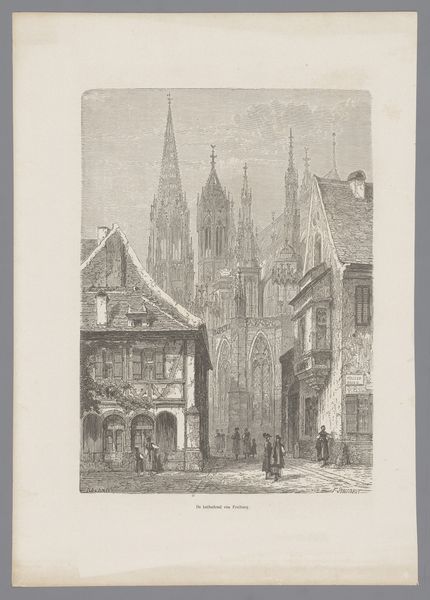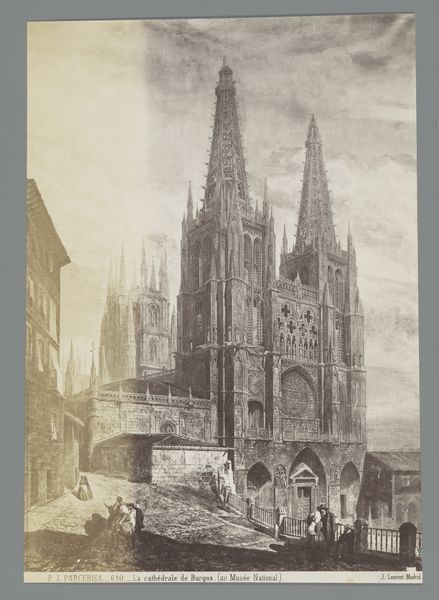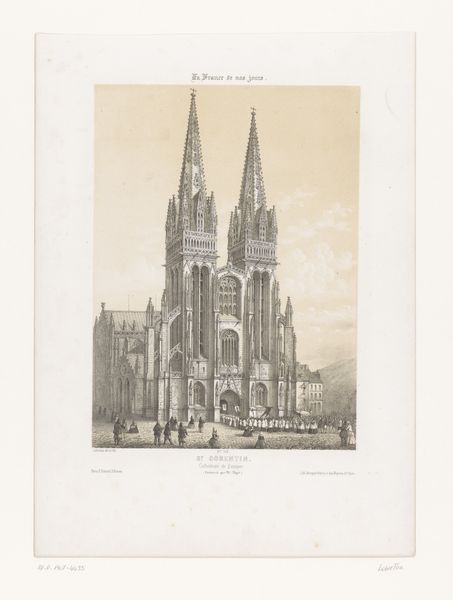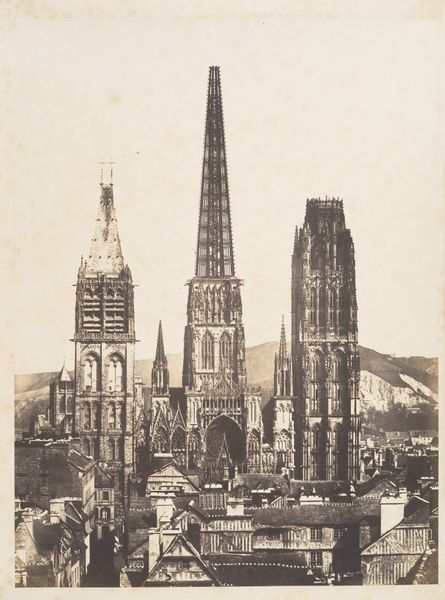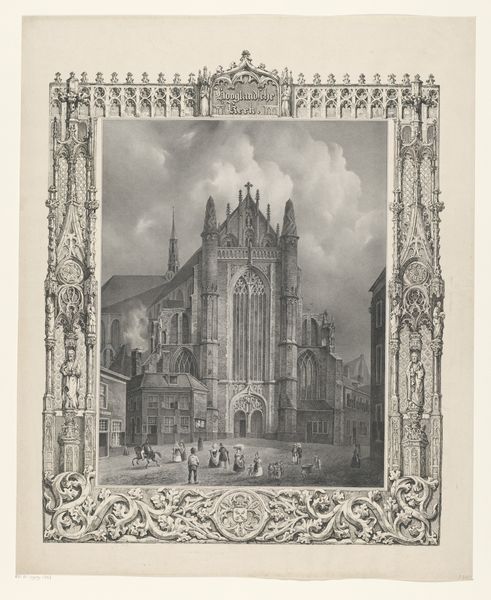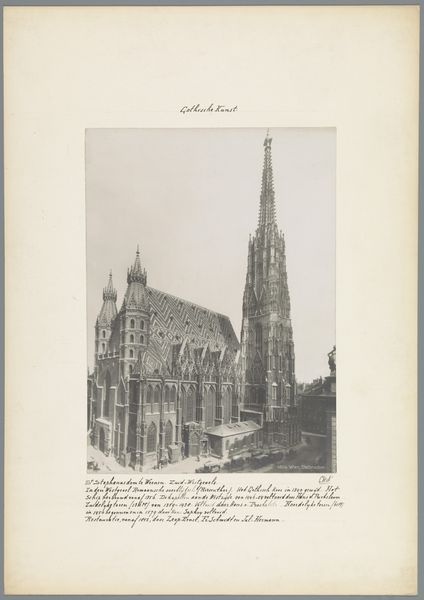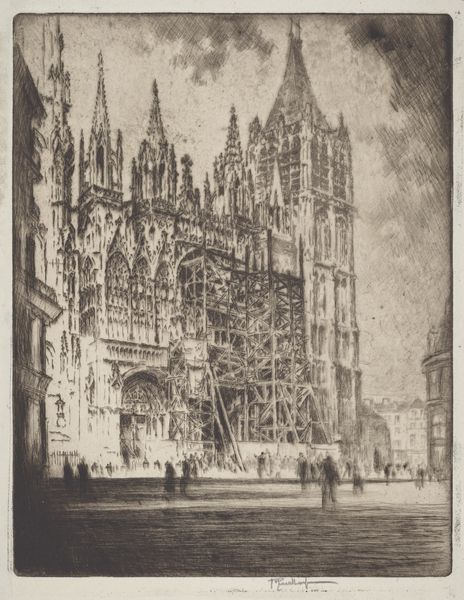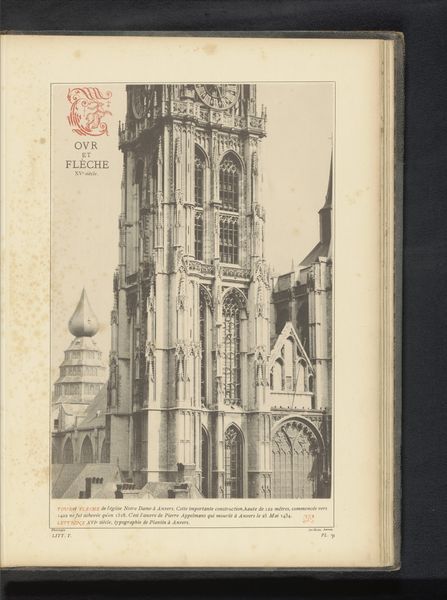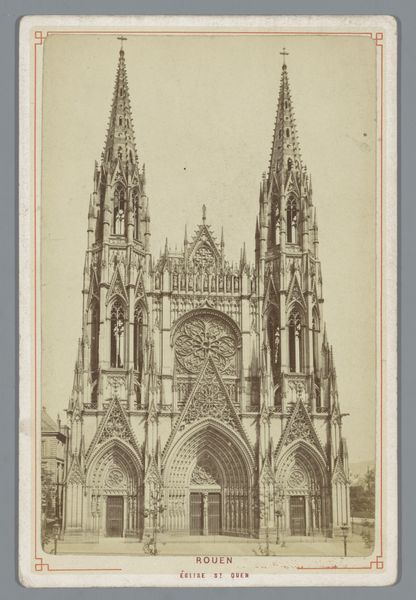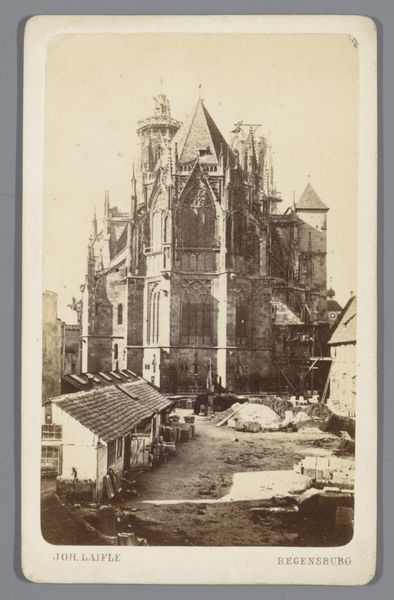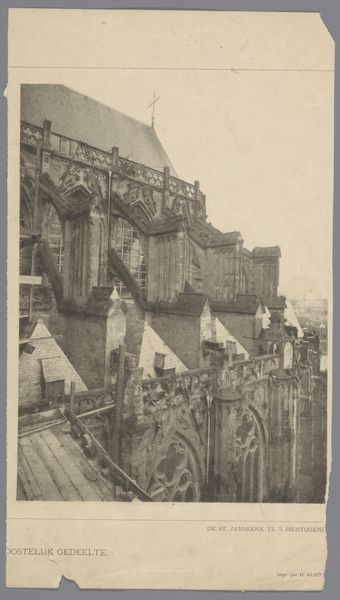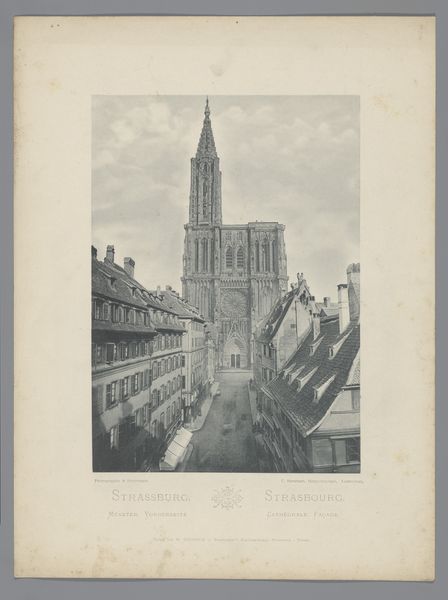
print, engraving, architecture
#
aged paper
# print
#
old engraving style
#
landscape
#
romanticism
#
cityscape
#
engraving
#
architecture
Dimensions: height 165 mm, width 130 mm
Copyright: Rijks Museum: Open Domain
Editor: This print from the 19th century, "View of the Cathedral of Burgos," by the Monogrammist HH, presents the cathedral amidst a bustling cityscape. It strikes me as a Romanticized vision, emphasizing the grandeur of the architecture against the everyday lives of the people. What do you see in this piece? Curator: I see a powerful commentary on power structures, and their manifestation in material culture and lived space. How does this imposing religious architecture shape the social fabric and control mechanisms within the community it overshadows? Consider who holds power, whose stories are told and whose are silenced by the omnipresence of the church. Look at those people depicted – who are they, and what is their relationship to this structure? Do you feel a sense of invitation or exclusion? Editor: That's a perspective I hadn't considered. I was focused on the picturesque quality of the scene. So, you're suggesting we look at the cathedral not just as a beautiful building, but as a symbol of institutional authority? Curator: Exactly! Art often operates within the realm of ideology, reinforcing or subverting dominant narratives. How does the artist portray the relationship between the cathedral and the townspeople? Do you notice any visual cues that hint at social dynamics or power imbalances? Are there people missing from this landscape? Editor: I see the people appear quite small in comparison to the cathedral, perhaps highlighting its dominance. There aren't any obviously marginalized populations visible though. Curator: That's precisely the point. Their absence speaks volumes about representation and who gets to be seen in these historical narratives. It makes you wonder about labor, class, and even gender dynamics within this community. What if the artist purposefully omitted the poor, the working class, and all of the work required to keep a town the size of Burgos in operation at the time. Editor: That definitely shifts my understanding of the print. It's a reminder that art doesn't exist in a vacuum and of who has been written out of the art historical canon. Curator: Indeed. By examining the social and historical context, we can uncover deeper meanings and understand art as a reflection of the power dynamics at play in society.
Comments
No comments
Be the first to comment and join the conversation on the ultimate creative platform.
